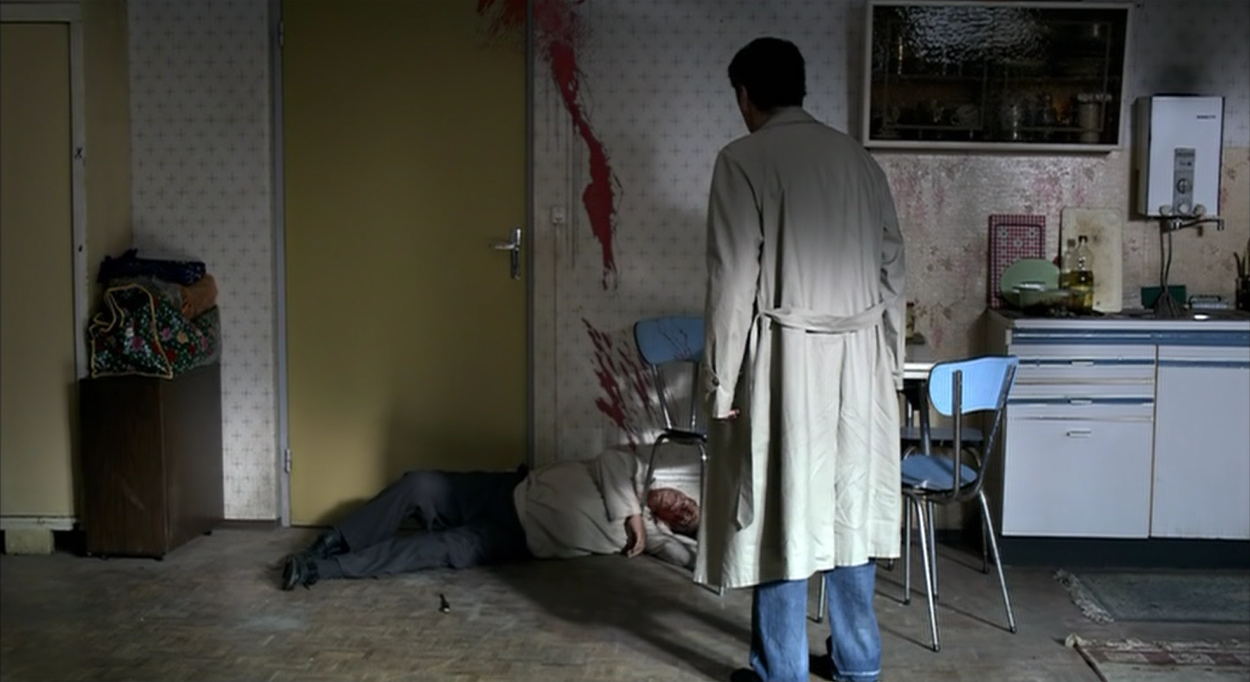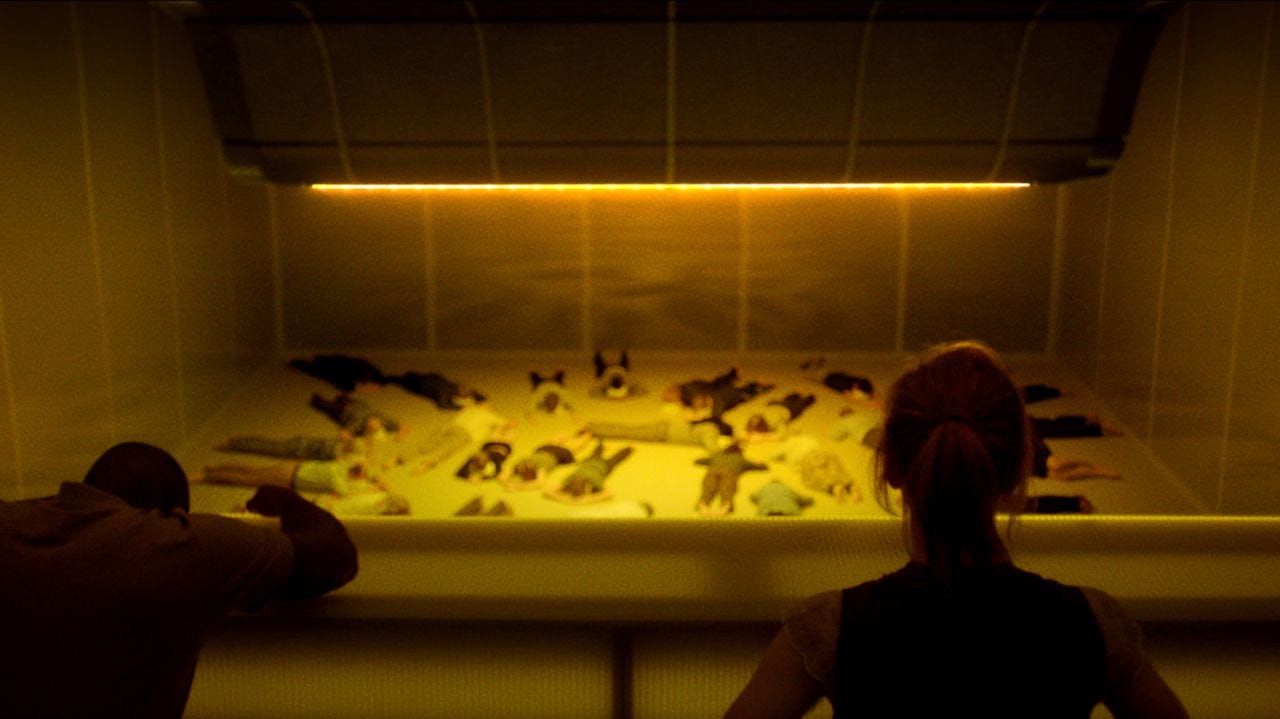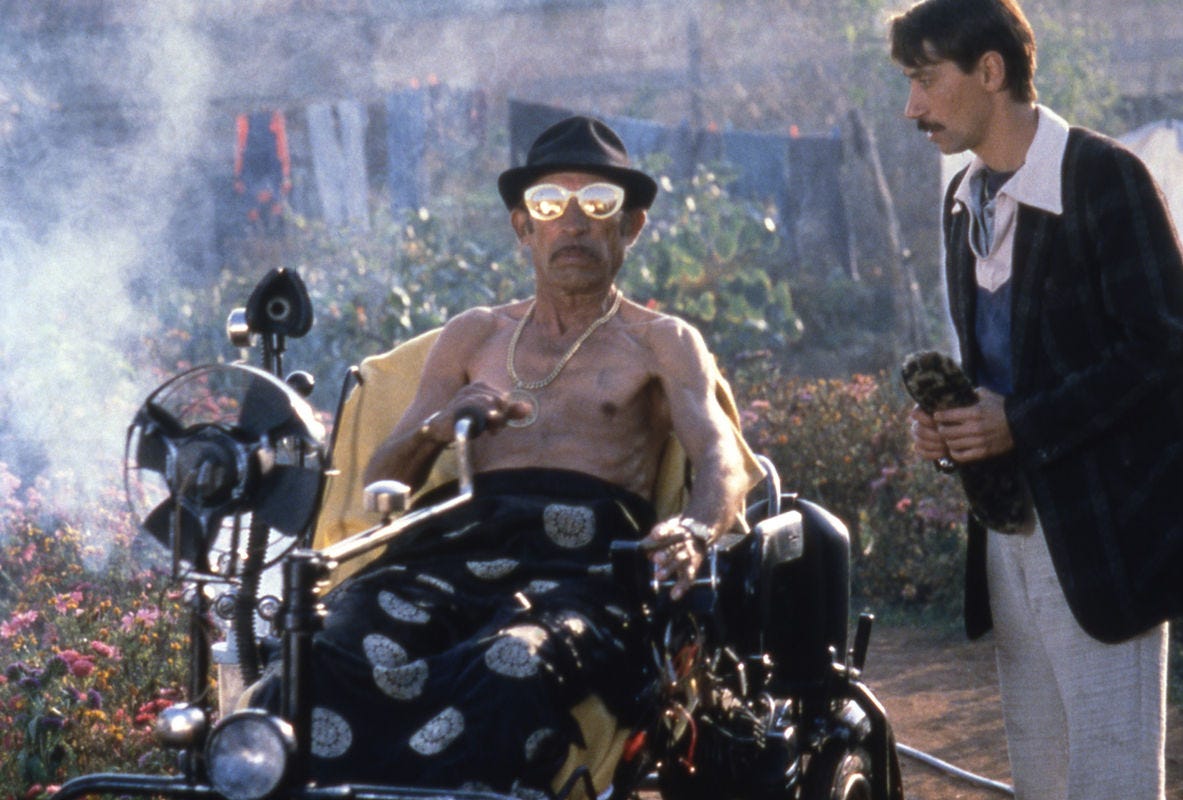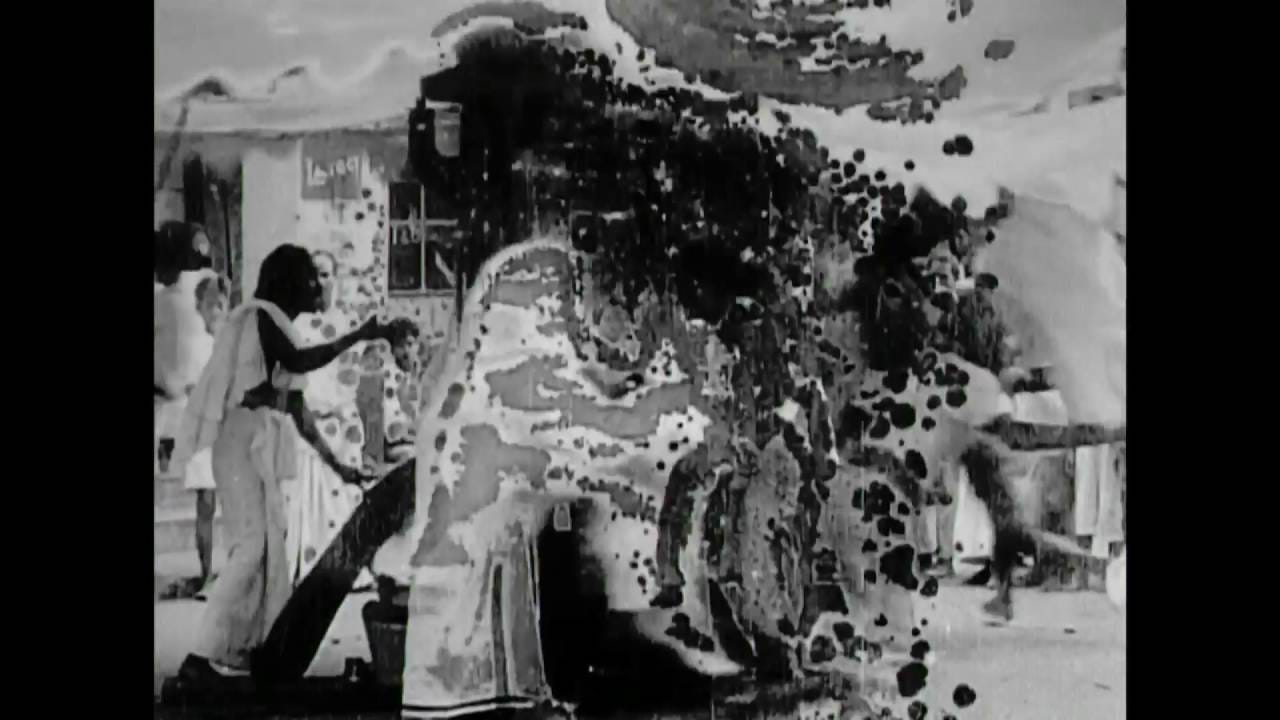Michael Atkinson Reviews on the Best Years of Our Lives
Smashcut 365: A Film a Day — Year 2, Week 8
A Cinephile'due south Guide to Streaming

50/365: Lawrence of Arabia (David Lean, 1962) (Vudu, YouTube, Amazon Prime)
Perhaps the only wide-screen-Oscar-epic behemoth from the '50s and '60s that fully lives up to its extraordinary reputation, this historical monster is a veritable shrine to the days when visual spectacle meant staging huge events in extraordinary places — stuff you can't fake with a figurer. Still, information technology'due south a more fabulous, ambiguous launch into historical psychodrama than it's always been given credit for, with hands the most perverse and original hero in its genre'south history. Opportunist and moralist, sadist and masochist, exotica-entranced English fart and effeminate tribal godling, Peter O'Toole's T.E. Lawrence, as English envoy sent to Arabia during WWI to assistance the Arab tribes fight off the Ottoman Turks' invasion, is such a freak all that'south clear near him past the moving-picture show's terminate is that his only true place of belonging is on the absurd mantle of posthumous myth. Apparently, you should see it on the biggest screen you can observe, but the film's vast visual integrity is apparent to the naked heart even if you lot watched it on your telephone. Which you shouldn't.

51/365: Cache (Michael Haneke, 2005) (Vudu, YouTube, Amazon Prime number)
Absurd and simple merely resonating invisibly out into our lives similar an ten-ray, Haneke's insidious film is a mystery wrapped in a tangle of sightlines — you lot are rarely confident about what you're watching, and never certain that watching will exist enough. A bobo Parisian couple (Daniel Auteuil and Juliette Binoche) are inexplicably haunted past videotapes taken of them, past cameras that cannot take been present; eventually, the ensuing paranoia not only begins to unravel their family but to reveal sins of the by that resonate outward, roping in France's colonialist sins. All the while, Haneke implicates usa in the surveillance — with each new shot, we're never sure if what we're watching is "live" or another slice of surveillance, or if the point of view is "ours" or someone else's, complete with secret agenda. Haneke is non our only hardcore existentialist, only he might be the nearly pure-minded; Cache ("hidden," as Auteuil's crumbling modern man says, near everything) has a Mandelbrot set's molecular uniformity, and a devilish structure that makes every cut an occasion for what-is-information technology-now heebie-jeebies. Metaphorically, it's a gold-plated Rorschach plot — what's inadvertently revealed is political, personal, familial, cosmic, and all of the above.

52/365: Overlord (Stuart Cooper, 1975) (Amazon Prime, iTunes)
This oddity split a Silver Comport in 1975 Berlin, an odd achievement for a low-budget British flick about WWII that's composed of l% or more of archival footage. Cooper's ambitions were primarily textural — he spent years hunting through the national archives for images from the most photographed war ever waged, and used menstruum lenses and picture show stock for the fictional material. His co-conspirator was baronial cinematographer John Alcott, who shot in a fastidiously anachronistic style immediately before realizing the candelit universe of Kubrick's Barry Lyndon. The story is rather All Quiet-ish, and deliberately generic: an unassuming lad (Brian Stirmer) signs up, endures basic training and somewhen faces gainsay, against the meat grinder of Normandy Beach during the eponymous invasion. The film's revivification of a wasteland Europe offers up a powerful whip-lesson for the post-war conceited: that the waging of war, fifty-fifty this most romanticized of conflicts, ways bringing a corpse-mountain hell to someone'due south habitation neighborhood.

53/365: Aniara (Pella Kagerman & Hugo Lilja, 2019) (Amazon Prime, Vudu)
A nihilistic Swedish sci-fi film? Based on a beloved epic poem by a Nobel winner? This fascinating new genre moan is something like the anti-Ad Astra; its blatant and hopeless existentialist probings are more along the lines of Russians similar Tarkovsky and Sokurov. A vast, self-sustaining, luxury-mall-like space ferry to Mars is sent off class, with its fuel jettisoned — thus starting time a literally endless migrate into space, with the just balm to the hopelessness being an AI therapy room that allows visitors to enjoy a VR walk on World (the way it used to be, with grass and trees). Of class, equally years pass, even the AI surrenders hope and self-destructs, love and lark and entertainment are lunged upon as solutions and then fade, suicide, madness and murder go common, and the pointless voyage'due south parallel to our lives, spent inexorably moving forrard in time with no destination, turns harrowing.

54/365: Blackness Cat, White Cat (Emir Kusturica, 1998) (Amazon Prime)
Anyone familiar with the films of the Sarajevo-born Kusturica knows what they're in for with this unrestrained absurdism, well-nigh a Rom enclave on the banks of the Danube, a festering nest of devious animals, sniping neighbors, grifters, crooks, and layabouts, every bit it primes for a particularly troublesome wedding. Auto-eating pigs, humping dogs, begging gypsies, dwarf brides, golden-toothed paraplegic mobsters, hidden corpses: the Slavic yen for explosive peasant folk nastiness is turned upwards to 11, and you'll never be bored. The humor is often crude, but Kusturica'due south films all intend on beingness filthy, hungry parades of life, and you lot can;'t say they don't get there. Sure, exhausting,but who'southward going to mutter most a pic with also much stuff in information technology?

55/365: Decasia (Nib Morrison, (Amazon Prime, Vudu)
In not-narrative, "experimental" movie circles, the entire result of "constitute" film is a fascinating puzzler — which of its layered, contradictory purposes are relevant? If avant-gardists like Craig Baldwin or Bruce Conner scramble old industrial/government footage into new and ironic forms, who'due south the author? Tin it "mean" or "be" two things at in one case? This feature-length assemblage, which Errol Morris said might be "the greatest moving-picture show" of all time, is predicated entirely on the issue of nitrate stock decay. Or, possibly it'southward well-nigh how bewitchingly beautiful the rotting images are, and how heartbreakingly imperceptible all movies are. The footage is of near whatsoever multifariousness and from whatsoever source — Morrison hunted the world'due south lesser archives for ill-preserved picture show that had begun to dissipate: travelogues, sometime Asian serials, home movies, test shots, circus footage, etc. The images are all compromised by decay in varying ways and to varying degrees, and although a fin de siecle boxer may seem to throw jabs at a metamorphic cavalcade of liquidy rot, for the virtually part the film is a series of fairly typical silent-film images that virtually dissolve away before our optics, like fading memories. The upshot to this can be very unsetlling, an effect multiplied by Michael Gordon'southward deliberately dissonant orchestral score, which was actually composed first. Information technology's a trip to watch, but likewise a hall or mirrors to ponder: these images have been rescued in order to brand them erase their ain initial purpose and express their neglected decay. If they hadn't rust-covered (or decayed enough) would they have whatever purpose at all? Tin scrapped cultural detritus naturally beset by chemic entropy become art but because someone says it is? What is movie theatre, except chemically apprehended memory?

56/365: Alraune (Henrik Galeen, 1928) (YouTube)
This tardily-game German silent has an almost pathological root in Teutonic legend — the one about the mandrake root ("alraune" in German) growing in gallows soil and fed by the ejaculate of hanged men. Galeen was adapting Hanns Heinz Ewers's novel, in which a scientist (Paul Wegener) investigates genetic destiny by impregnating a hooker with just such rest, and so acts as the offspring'south male parent, until she grows upwardly to be a hellzapoppin Brigitte Captain. Here in a sense is the Nazi preoccupation with racial engineering and inheritance, but twisted into a father-girl Frankenstein story whose monster is a selfish (read: self-determining) teenage tramp who escapes from her convent and only wants to take fun, even if that means driving her patriarch crazy with jealousy and animalism. Wegener makes for a formidably mountain-faced demagogue, but the motion picture'south principal engine is Captain, instantly famous as the robotrix in Metropolis a twelvemonth earlier. No other actress always moved exactly like Helm; ferret-like, lurid and as slouched equally a Harryhausen homunculus, she manifests her character'southward dramatic peaks like she'southward leading an experimental dance version of Salome, radiating sexual power with every twist and saunter. Information technology's a slow pic — and ane that was remade two years afterwards with sound, to no substantial advantage — just it builds to a stunning landslide of sexual coercion and incest mania, and was unsurprisingly censored in many countries, including United kingdom of great britain and northern ireland.
Previous 365
Year Two Annal: Week 1 , 2 , 3 , 4 , 5 , 6 , 7
Year One Archive: Calendar week i , 2 , iii , four , five , 6 , vii , viii , 9 , 10 , 11 , 12 , xiii , 14 , 15 , 16 , 17 , 18 , 19 , 20 , 21 , 22 , 23 , 24 , 25 , 26 , 27 , 28 , 29 , 30 , 31 , 32 , 33 , 34 , 35 , 36 , 37 , 38 , 39 , twoscore , 41 , 42 , 43 , 44 , 45 , 46 , 47 , 48 , 49 , 50 , 51 , 52
Keep upward with Smashcut 365 by following Smashcut on Medium, Instagram, Twitter, or Facebook.
What is Smashcut?
Smashcut is a next generation learning platform built for existent time, media-based educational activity. Smashcut partners with universities and organizations to develop and deliver customized, branded, media-based online programs. The Smashcut platform features a loftier caste of collaborative teaching, and real-time student project review via live i:1 video sessions with instructors. We built Smashcut to help the next generation of students learn to communicate ideas and work effectively in a civilization and workplace increasingly dependent on visual media and digital collaboration. Acquire more than at Smashcut.com .
robbinsthornested.blogspot.com
Source: https://medium.com/smashcut-film/smashcut-365-a-film-a-day-year-2-week-8-b2796b5a4a9a
Post a Comment for "Michael Atkinson Reviews on the Best Years of Our Lives"